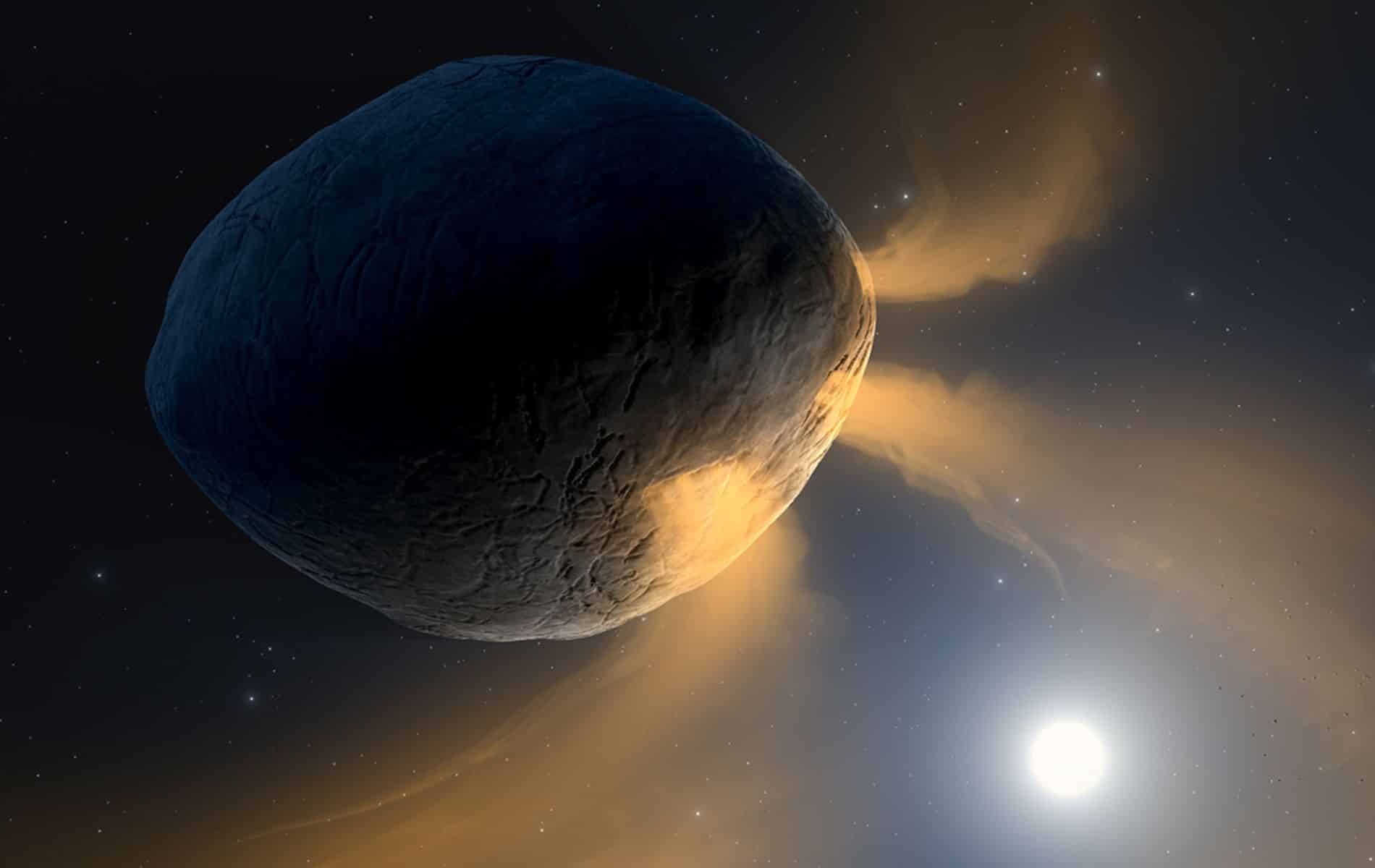Scientists thought Phaethon — responsible for the Geminids — was kicking up dust to form its gorgeous comet-like tail. But new observations now show that the tail isn’t made of dust at all…
We’ve known for a while that the asteroid Phaethon is having an identity crisis – and behaving like a comet. For example, like comets, it becomes increasingly bright and forms a tail as it gets closer to the Sun. In addition, the asteroid is responsible for the Geminid swarm (see box). Scientists believe that Phaethon’s comet-like behavior is caused by dust escaping from the asteroid while it was being heated by the Sun. But a new study now reveals that Phaethon’s tail isn’t dusty at all.
About Phaethon
Phaethon was discovered in 1983. The space rock is responsible for the Geminids. The meteor shower that appears every year in December. The swarm is formed by the Earth moving through the debris—small rocks and pebbles—left in orbit by Phaethon. In doing so, those small pieces of debris enter our atmosphere at high speed, where they vaporize. This is also clearly visible from the surface of the earth; A meteor shower causes flashes of light (also called meteors) in the sky. These are created because the air around the small stones and pebbles – which is moving through the atmosphere at a very high speed – is made to glow. But it’s not just this meteorite that guarantees that Phaethon can enjoy a great deal of attention. Due to its large size (Phaethon has a diameter of 5.4 km) and the fact that it is relatively close to Earth, the asteroid is also known as a “potentially dangerous space rock”. But: don’t panic! The space rock’s orbit has now been mapped in great detail and there is no indication that the space rock will pose a threat in the foreseeable future.
Asteroids are rocky in nature and usually do not form tails as they approach the sun. This is what comets do, because these bodies are made up of a mixture of ice and rock. As comets approach the sun, the ice vaporizes and material is blown off the surface. This creates a signature effect. When the Earth then moves through this debris trail, these comet particles burn up in our atmosphere. We see this in the night sky as a “shooting star” – or, a meteor.
tourist car
But Phaethon is the odd one out. Soon after the discovery of the asteroid, astronomers realized that the object’s orbit matched that of Gemini. This strongly suggests that Phaethon was the cause of this annual meteor shower, even though Phaethon was an asteroid, not a comet. In addition, in 2009 researchers discovered a small tail extending from Phaethon as it approached the Sun closely. The appearance of the tail supports the idea that the asteroid loses dust when heated by the Sun.
material
But the story takes a surprising turn in 2018. Using NASA Parker Solar Probe (a probe that has been on its way to our parent star for several years), researchers have shown that the Geminid debris trail contains far more material than Phaethon can drop. Astronomers were baffled. Cautiously, the question began to arise whether the asteroid’s comet-like behavior was caused by something other than dust.
Sodium gas
in New study The researchers came to a startling new conclusion. After taking a closer look at the tail of Phaethon, they find that it is not dusty at all. The team studied data collected by the space telescope Sun and Heliospheric Observatory (SOHO) and the NASA space mission Solar Terrestrial Relations Observatory (stereo). This indicates that the tail is not made of dust, but is actually made of sodium gas.
This means that the strange asteroid just got a little weirder. “Our analysis shows that Phaethon’s comet-like behavior cannot be explained by dust,” said researcher Qicheng Zhang. This means that we are turning a common assumption that emerged from fourteen years of research on its head. Moreover, we also did it with the help of two spacecraft that are not even intended to study these types of phenomena.”
other comets
The fact that the comet-like tail is not now shown to be made of dust may have far-reaching implications. For example, researchers wonder if other objects that have been classified as comets aren’t actually comets at all. “Maybe some of them are also rocky asteroids like Phaethon, which are heated by the sun,” Zhang suggests.
Gemini Swarm
In addition, the discovery may change the origin story of the Geminid Swarm. Because if Phaethon didn’t throw up so much dust, how does the asteroid provide the material for that meteor shower we see every December? Researchers suspect a disruptive event occurred in the distant past. A piece of the asteroid may have broken off at that time. This material may have formed the Geminids’ debris path. However, this speculation remains so far. For example, researchers don’t know how or why the asteroid lost a fragment in this case.
You may not have said the last word on Phaethon yet. For example, astronomers hope to find more answers with the upcoming DESTINY+ mission, which will visit the asteroid later this decade. The probe will image the rocky surface and subject the debris track to close examination. The hope is that this mission will uncover many mysteries about the strange asteroid.







